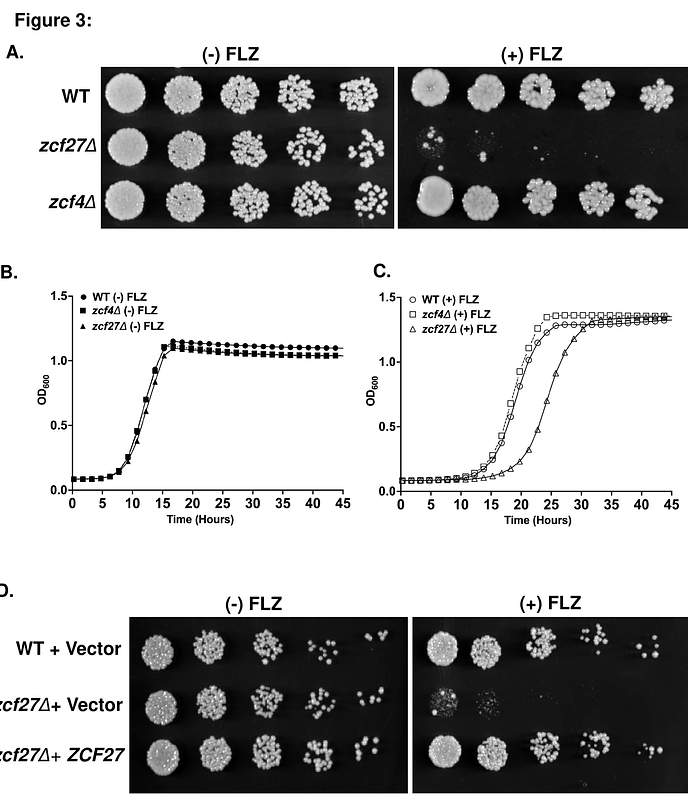Candida glabrata maintains two Hap1 homologs, Zcf27 andZcf4, for distinct roles in ergosterol gene regulation to mediate sterol homeostasis under azole and hypoxic conditions

Candida glabrata maintains two Hap1 homologs, Zcf27 andZcf4, for distinct roles in ergosterol gene regulation to mediate sterol homeostasis under azole and hypoxic conditions
Saha, D.; Gregor, J. B.; Hoda, S.; Eastman, K. E.; Navarrete, M.; Wisecaver, J. H.; Briggs, S. D.
AbstractCandida glabrata exhibits innate resistance to azole antifungal drugs but also has the propensity to rapidly develop clinical drug resistance. Azole drugs, which target Erg11, is one of the three major classes of antifungals used to treat Candida infections. Despite their widespread use, the mechanism controlling azole-induced ERG gene expression and drug resistance in C. glabrata has primarily revolved around Upc2 and/or Pdr1. In this study, we determined the function of two zinc cluster transcription factors, Zcf27 and Zcf4, as direct but distinct regulators of ERG genes. Our phylogenetic analysis revealed C. glabrata Zcf27 and Zcf4 as the closest homologs to Saccharomyces cerevisiae Hap1. Hap1 is a known zinc cluster transcription factor in S. cerevisiae in controlling ERG gene expression under aerobic and hypoxic conditions. Interestingly, when we deleted HAP1 or ZCF27 in either S. cerevisiae or C. glabrata, respectively, both deletion strains showed altered susceptibility to azole drugs, whereas the strain deleted for ZCF4 did not exhibit azole susceptibility. We also determined that the increased azole susceptibility in a zcf27{Delta} strain is attributed to decreased azole-induced expression of ERG genes, resulting in decreased levels of total ergosterol. Surprisingly, Zcf4 protein expression is barely detected under aerobic conditions but is specifically induced under hypoxic conditions. However, under hypoxic conditions, Zcf4 but not Zcf27 was directly required for the repression of ERG genes. This study provides the first demonstration that Zcf27 and Zcf4 have evolved to serve distinct roles allowing C. glabrata to adapt to specific host and environmental conditions.


